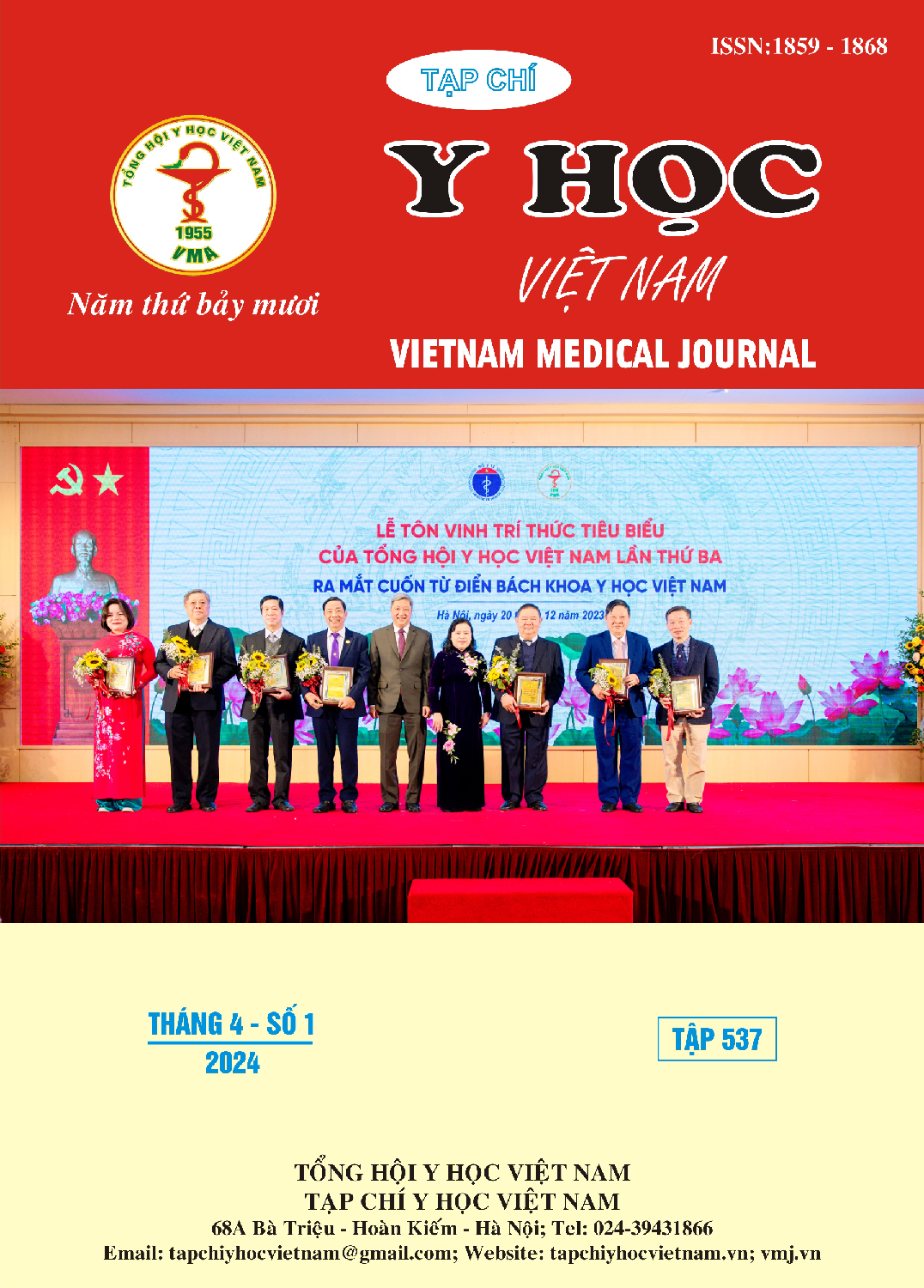CLINICAL AND LABORATORY FEATURES OF PEDIATRIC HODGKIN LYMPHOMA AT NATIONAL INSTITUE OF HAEMATOLOGY AND BLOOD TRANSFUSION IN 2017-2023
Main Article Content
Abstract
The study describes the clinical and laboratory features of 22 pediatric patients diagnosed with Hodgkin's lymphoma at the National Institute of Hematology and Blood Transfusion in the period 2017 - 2023. Results showed that pediatric patients’ age ranged from 4 to 15 years old with the median age of 13. The incidence rate in boys is higher than in girls (male/female is 1.4/1). Regarding clinical features, common symptoms of the disease include enlarged lympho nodes (81.8%), anemia (50%), and B syndrome (45.5%). Enlarged lymph nodes were mainly found above the diaphragm, including cervical (86.4%), mediastinal (68.2%), and axillary lympho nodes (59.1%). Extranodal lesions are rare, of which the most common is anterior mediastinal tumor (18.2%). Regarding laboratory features, classic Hodgkin lymphoma accounts for a high proportion (91.9%), of which the two most common subtypes are nodular sclerosis (36.4%) and mixed cellularity (31.8%). Among those with classic Hodgkin’s lymphoma, CD30 was positive in all cases, CD15 was positive in 80%. The majority of pediatric patients admitted to the hospital are in the late stages (III, IV), which accounted for 63.7%. Peripheral blood formula showed that 54.5% of pediatric patients had an increased number of white blood cells, mainly neutrophils while the number of lymphocytes was within normal limits.
Article Details
Keywords
Pediatrics Hodgkin lymphoma
References
2. PDQ Pediatric Treatment Editorial Board. Childhood Hodgkin Lymphoma Treatment (PDQ®): Health Professional Version. In: PDQ Cancer Information Summaries. National Cancer Institute (US); 2002. Accessed August 15, 2022. http://www.ncbi.nlm.nih.gov/books/NBK65726/
3. Quintanilla-Martinez L. The 2016 updated WHO classification of lymphoid neoplasias. Hematological Oncology. 2017;35(S1):37-45. doi:10.1002/hon.2399
4. Stankiewicz J, Kołtan A, Demidowicz E, et al. Therapy results in pediatric Hodgkin lymphoma — does less mean better? Experience from a single children’s oncology center. Ann Hematol. 2023;102(8):2109-2117. doi:10.1007/ s00277-023-05268-5
5. Alebouyeh M, Moussavi F, Haddad-Deylami H, Vossough P. Successful ambulatory treatment of Hodgkin’s disease in Iranian children based on German-Austrian DAL-HD 85-90: single institutional results. Annals of Oncology. 2005;16(12):1936-1940. doi:10.1093/annonc/mdi401
6. Ngô Quang Cử. Nhận xét đặc điểm lâm sàng, cận lâm sàng và đánh giá kết quả điều trị bệnh Hodgkin ở trẻ em. Luận văn tốt nghiệp Bác sĩ chuyên khoa II, Trường Đại học Y Hà Nội. 2007.
7. Arya LS, Dinand V, Thavaraj V, et al. Hodgkin’s disease in Indian children: outcome with chemotherapy alone. Pediatr Blood Cancer. 2006;46(1):26-34. doi:10.1002/pbc.20157
8. Bazzeh F, Rihani R, Howard S, Sultan I. Comparing adult and pediatric Hodgkin lymphoma in the Surveillance, Epidemiology and End Results Program, 1988-2005: an analysis of 21 734 cases. Leuk Lymphoma. 2010;51(12):2198-2207. doi:10.3109/10428194.2010.525724
9. Vincent DeVita. Hodgkin’s disease, Principle et practise of Medical Oncology. 2005.


